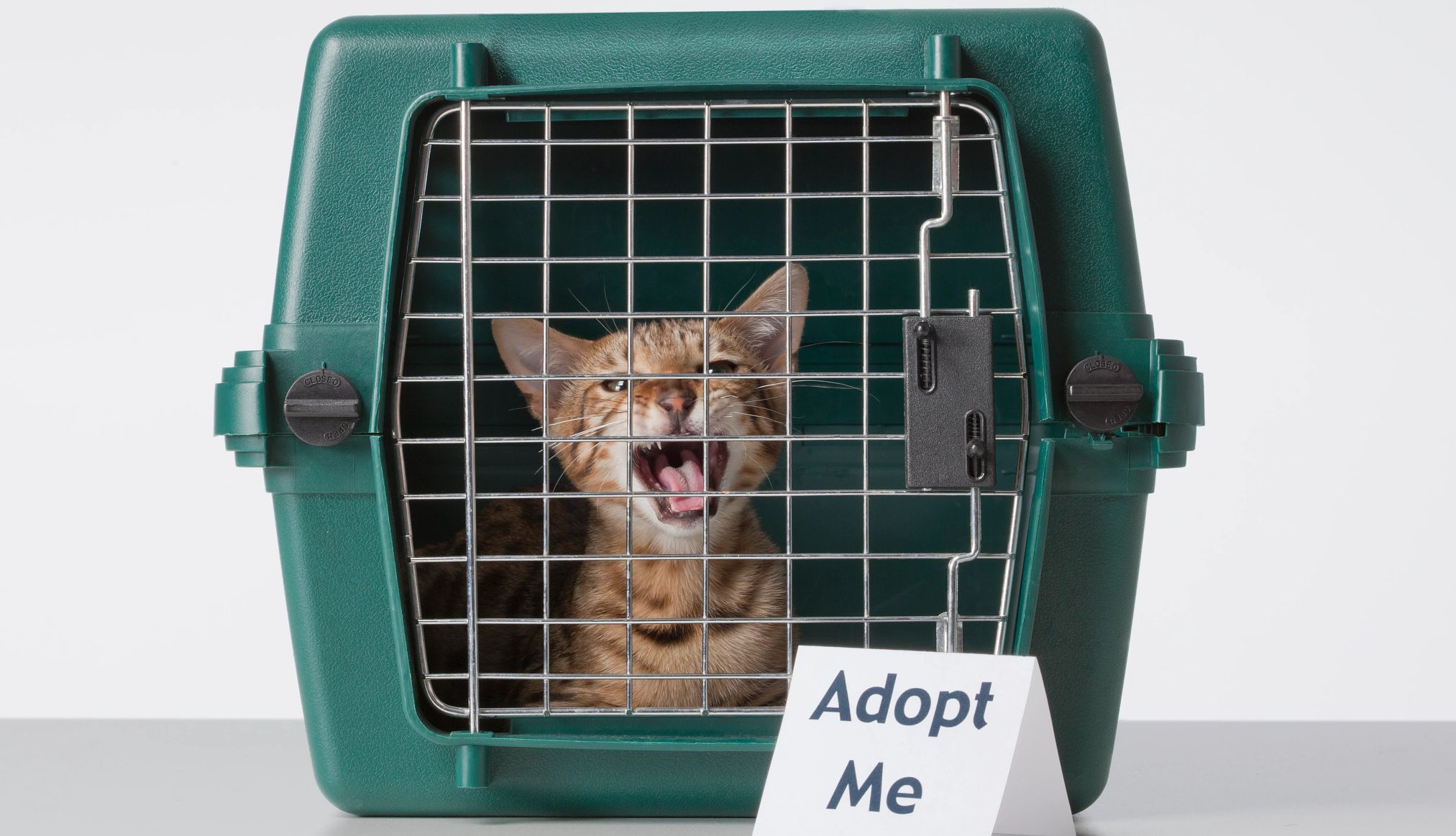AARP Hearing Center


According to a 2024 survey by the American Pet Products Association, 51% of all pet owners are either Gen Xers or Baby Boomers. What makes a pet so appealing to people over 50? Dogs and cats can provide physical, mental and emotional benefits to seniors, says Deana Corbin, executive director of the Animal Protective League.
“Seniors with pets see a doctor less often than non-owners, recover faster from illness and injury, have lower blood pressures and heart rates,” she says. Pets also help them deal with stress, get more active and stave off cognitive decline.
Our guide will walk you through each step to help your new four-legged companion feel instantly at home.
WHERE TO START


Consider the commitment
Adopting a dog or cat isn’t the same as raising a child, but they may be in the house almost as long. Any pet adoption “should be considered a 10- to 15-year commitment,” says Simone Olivieri, an adoption counselor at Berkshire Humane Society in Pittsfield, Massachusetts. That can run longer, depending on the pet — a domestic indoor cat can live 20 years or more, while the average dog lives 10 to 15 years, depending on the breed. “Large breeds don’t live as long as small breeds,” Olivieri says. “But in general, all animals can live longer with a healthy diet and exercise.”
Consider the cost
It can be surprisingly expensive to own a pet. For a dog, the costs range between $1,270 and $2,803 per year, according to a 2024 Synchrony study. That includes everything from food ($434 to $684), to health expenses like medications and vaccinations ($534 to $1,285), to general expenses like toys, supplies and grooming products ($231 to $551). For cats, the annual costs can range from $961 to $2,487, which includes food ($351 to $584), health expenses like checkup, vaccinations and medications ($374 to $965), and miscellaneous items like toys, grooming supplies and treats ($169 to $698). You should also consider whether you’ll need a dog walker — a professional service can cost, on average, between $20 and $30 per half hour — and boarding for when you’re out of town, which can cost between $40 and $50 a night for dogs and $25 and $40 for cats. Lisey Good, an adoption specialist at City Dogs & City Kitties Rescue in Washington, D.C., suggests looking into pet insurance, which can help with the burden of unexpected medical expenses. “Every new pet owner should be prepared for veterinary bills,” she says. Consider pet insurance providers such as Spot, Fetch and Pets Best. AARP also has tips for lowering vet bills.
Consider your lifestyle
If you still work for a living, how often are you at the office? If you’re retired, do you travel regularly, or visit places that might not be pet-friendly? Your lifestyle is a huge factor in choosing the right pet. “Do you want a dog that can travel everywhere with you, a dog that can go hiking, or a dog that just sits on your couch?” Olivieri asks. If you’re planning a big life change soon — like moving or getting married — it might be a good idea to delay getting a pet. And make sure to check with your landlord, HOA or home insurance company to see if certain breeds aren’t accepted, Olivieri adds.
WHICH PET IS BEST?


Personality versus breed
You might have a specific breed in mind, but Good believes it’s more important to “choose a new pet based on behavior of the individual dog, not looks or breed.” This is easier to do if you adopt from a shelter rather than a “puppy mill” store — more on that later — as rescues tend to be “a variety of mixes, and we don’t always know what the breed is,” Olivieri says. She agrees that finding the right pet has more to do with energy and personality than breed. “The look of the animal might not be true to its breed,” she says. Olivieri suggests meeting with a few dogs and taking your time to get a better idea of what feels right for you. Think you might be more of a cat lover? Hang out in a cat cafe for an afternoon and see if that’s more your speed.
Dog breeds best for new owners
The best dogs for older adults will vary from person to person, but there are some general guidelines. Megan Conrad, an associate veterinarian at Milwaukie Animal Clinic in Portland, Oregon, recommends smaller-breed dogs for seniors “as large breeds can be difficult to manage,” she says. Also, high-energy dogs like border collies, golden retrievers, Russell terriers and German shepherds may be adorable, but steer clear unless you’re especially active. “My favorite dog breeds for seniors are Maltese, Bichon Frise, Cavalier King Charles Spaniel and Shih Tzu,” Conrad says. “All are generally mild-mannered and friendly.”
Cat breeds best for new owners
Cats are generally easier to manage than dogs, but some breeds — like Bengals, a high-energy cat that requires a lot of interaction — are best avoided unless you’re ready for the workload. Other popular breeds, like Savannah cats, Sphynxes, Siamese cats and Abyssinians, “tend to be more work and need more mental stimulation,” Conrad says. She encourages anyone over 50 to consider a domestic short-, medium- or long-hair cat. And above all, “focus on personality,” she says.
While you may be tempted to adopt a kitten, Samantha Bell, the resident “cat expert” at the nonprofit Best Friends Animal Society, advises against it. “Their true personalities don’t develop until they’re adults,” she says. “They’re also a lot more work than an adult. They have boundless energy while simultaneously learning to use their teeth and claws — not always a winning combination for a senior.”
Consider an older animal
A senior dog or cat might not be as instantly adorable as a puppy or kitten, but they might require much less maintenance when it comes to training, playtime or long walks. “Some senior pets are already trained,” says Gary Weitzman, president and CEO of the San Diego Humane Society. “Even if they’re not, they adapt faster and have an easier time focusing.” And unlike a puppy or kitten, what you see is what you get. “You already know what a senior animal’s full size, personality and required care will likely be,” Weitzman says. “This makes it easier to pick an animal who is the right fit for you.” There are local and national programs across the country that match older adults with older pets, like Pet Helpers’ Seniors for Seniors Adoption Program, Pets for the Elderly and Paws for Seniors. Many organizations also put on adoption events specifically for older adults.
Match your activity level
Good’s No. 1 rule for choosing a pet is finding one with less energy than you have. Even if you think having a super-active dog means you’ll finally have a reason to get off the couch and walk a few miles every day, it’s more likely that “you’ll both be miserable, because an active dog who doesn’t get enough exercise is not going to be happy,” Good says. Be realistic about your physical activity level, and not just whether you’re up for long walks in the park even during winter. “A young dog may be too rambunctious,” Corbin says. “Long-haired cats likely will need regular brushing. And there are always nails to clip.”
It’s not only whether you can keep up with your pet, but if your pet can keep up with you. If you’re accustomed to running five miles every Saturday morning and want your dog to join you, make sure you’re well aware of their physical limitations.
WHERE TO FIND PETS


Research area shelters
It may be tempting to head to a pet store, but many of these animals at these stores come from “puppy mills,” according to animal welfare group PAWS. Puppy mills, Corbin says, are “breeders who raise puppies in poor conditions and fail to provide the routine care that ensures they are healthy.” Pets from shelters or rescues, meanwhile, are “typically microchipped, have all age-appropriate vaccines, and are spayed or neutered,” Corbin says. “This can add up to significant savings for the adopter.”
































































You Might Also Like
How to Help Pets Through Grief
Here are practical tips to assist your furry friends while they’re depressed
Aging in Place
Tips for making your home safer and more comfortable as you get olderWelcome to Our Special All-Travel Issue
Older Americans are recalling youthful adventures — and hitting the road again